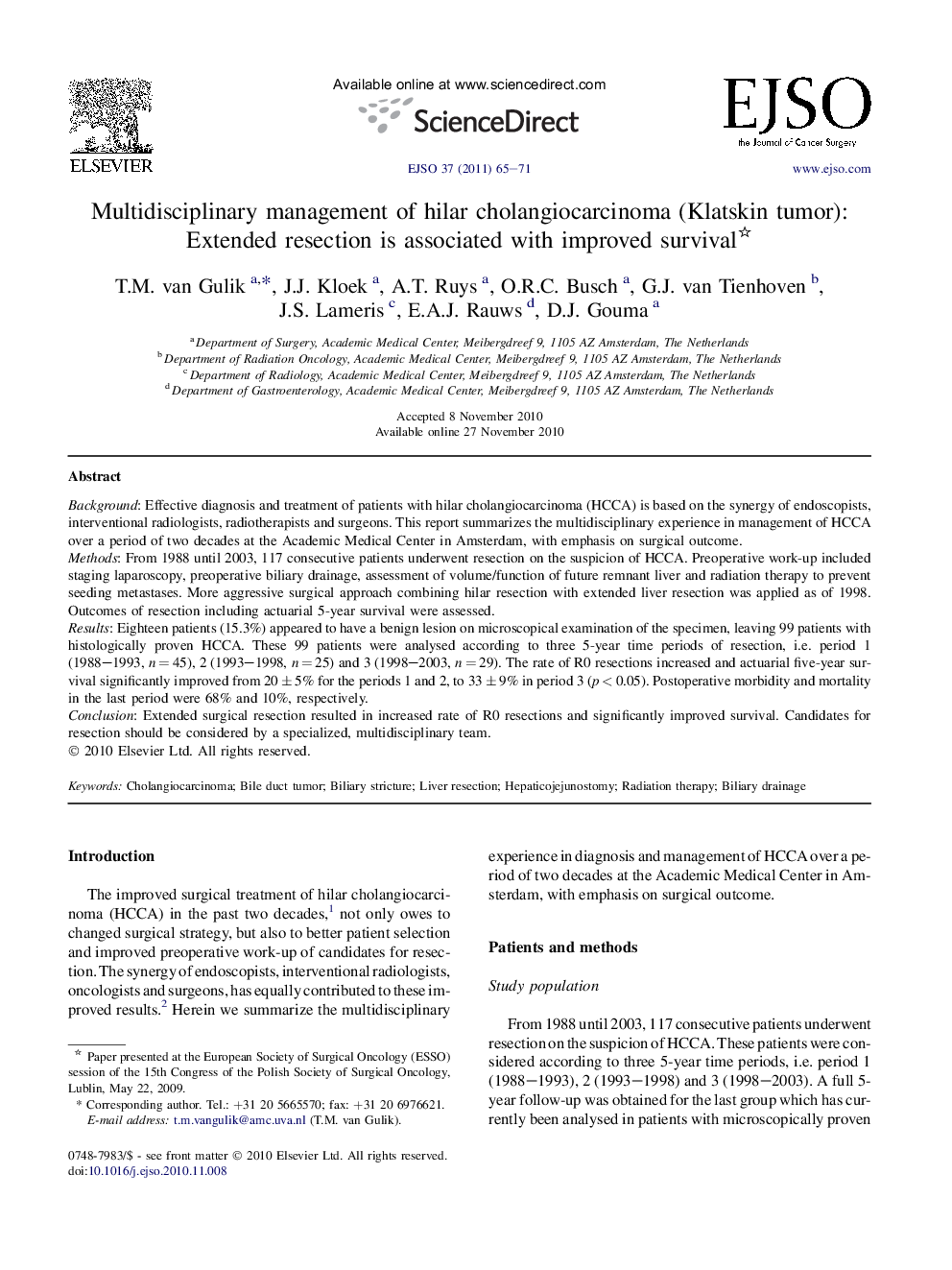| Article ID | Journal | Published Year | Pages | File Type |
|---|---|---|---|---|
| 6191912 | European Journal of Surgical Oncology (EJSO) | 2011 | 7 Pages |
BackgroundEffective diagnosis and treatment of patients with hilar cholangiocarcinoma (HCCA) is based on the synergy of endoscopists, interventional radiologists, radiotherapists and surgeons. This report summarizes the multidisciplinary experience in management of HCCA over a period of two decades at the Academic Medical Center in Amsterdam, with emphasis on surgical outcome.MethodsFrom 1988 until 2003, 117 consecutive patients underwent resection on the suspicion of HCCA. Preoperative work-up included staging laparoscopy, preoperative biliary drainage, assessment of volume/function of future remnant liver and radiation therapy to prevent seeding metastases. More aggressive surgical approach combining hilar resection with extended liver resection was applied as of 1998. Outcomes of resection including actuarial 5-year survival were assessed.ResultsEighteen patients (15.3%) appeared to have a benign lesion on microscopical examination of the specimen, leaving 99 patients with histologically proven HCCA. These 99 patients were analysed according to three 5-year time periods of resection, i.e. period 1 (1988-1993, n = 45), 2 (1993-1998, n = 25) and 3 (1998-2003, n = 29). The rate of R0 resections increased and actuarial five-year survival significantly improved from 20 ± 5% for the periods 1 and 2, to 33 ± 9% in period 3 (p < 0.05). Postoperative morbidity and mortality in the last period were 68% and 10%, respectively.ConclusionExtended surgical resection resulted in increased rate of R0 resections and significantly improved survival. Candidates for resection should be considered by a specialized, multidisciplinary team.
